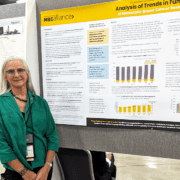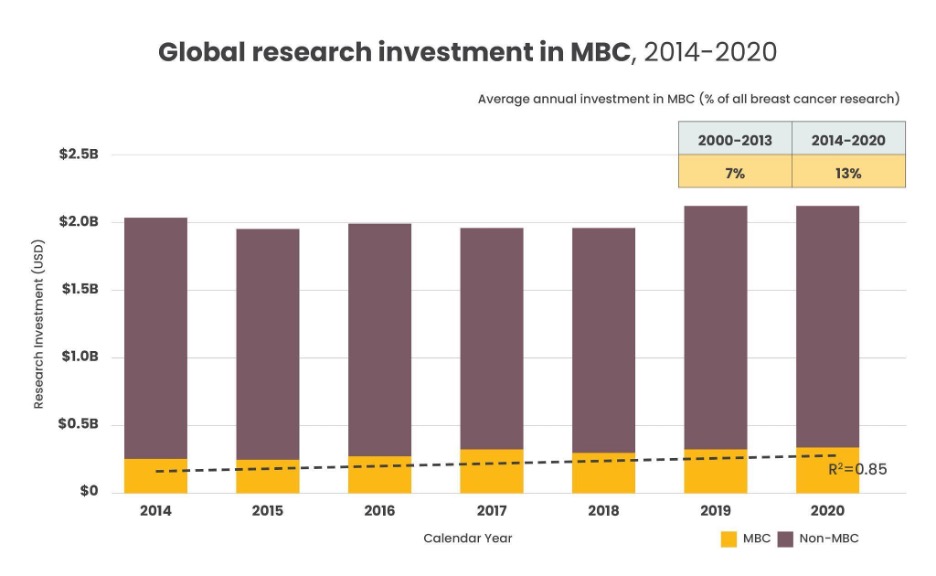MBC Research Funding Analysis
Exploring patient priorities and changes in MBC research funding in the last decade
The Landscape Analysis published by the Metastatic Breast Cancer Alliance (MBCA) in 2014 reported that only 7% of breast cancer research funding between 2000 and 2013 was devoted to metastasis. Over the last decade, the Alliance and others have advocated for increased funding for research for metastatic breast cancer (MBC), which claims nearly 43,000 lives every year in the US.
In 2022, the Alliance set out to explore and update how the landscape of funding for MBC research has changed since the original report. This information will help guide the Alliance’s advocacy efforts going forward.
Research priorities of patient advocates living with MBC

Teri Pollastro, MBCA Independent Advocate Living with MBC
Importantly, this new analysis was guided by the priorities of people living with MBC. Alliance members living with the disease were surveyed about their research priorities. MBC Patient Advocate Teri Pollastro shared her perspective, “The MBCA team kept the patient’s priorities front and center from the beginning to the completion of this project. This gives me hope that our questions will be addressed by the research community.”
The question “How can treatment resistance in each subtype be overcome?” was selected as the highest priority and used in the initial analysis (Table 1).
Table 1: Research priorities of patient advocates living with MBC
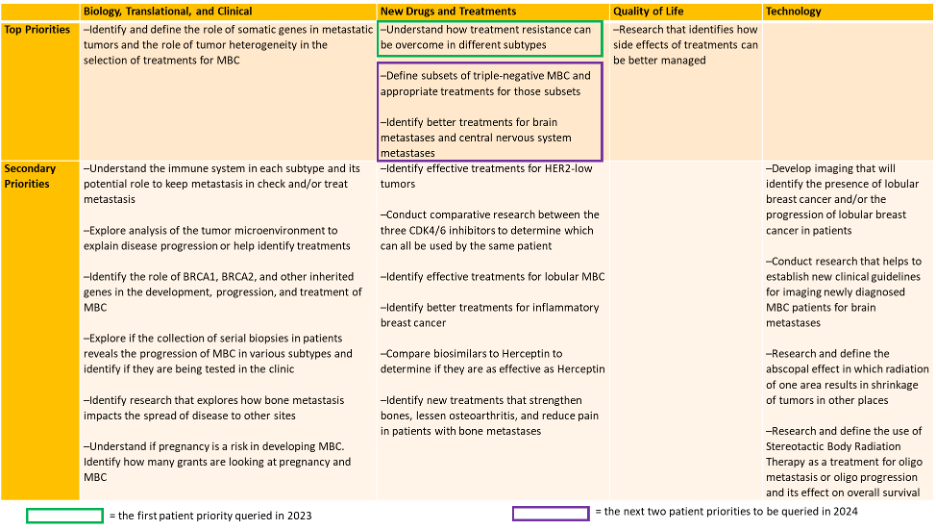
Unique in the current analysis vs the 2014 report is the development of a “coding tool”. The Alliance’s Research Funding Analysis Subcommittee and collaborators created this tool to query grants funded for breast cancer research. The tool was trained on manually coded grants from the 2000-2013 analysis and validated by expert coders.
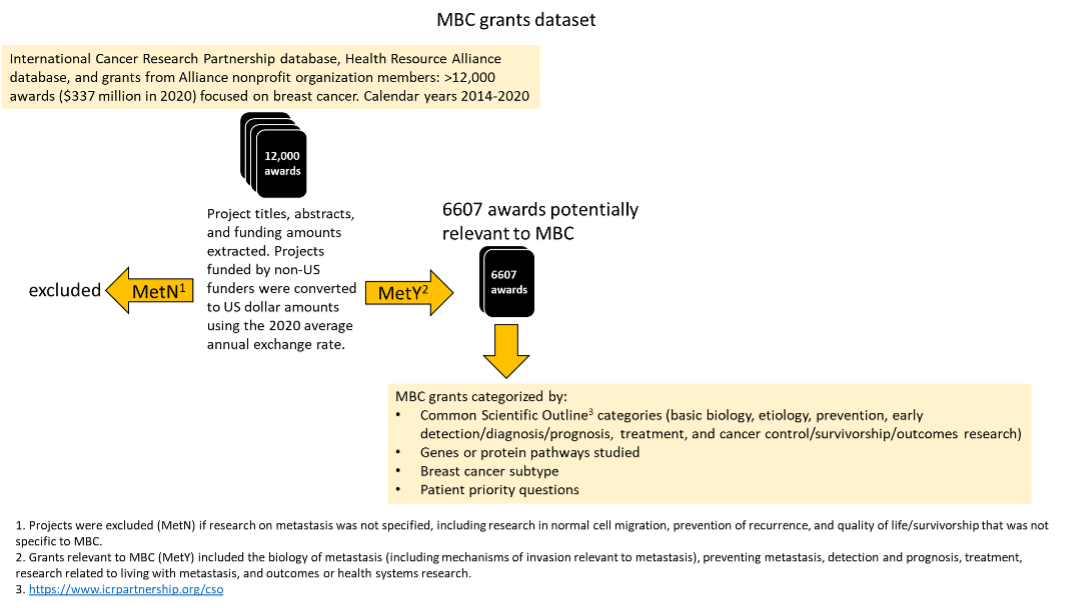
The grants we analyzed were funded by government and non-profit organizations. Industry-funded research is not represented here because it is not publicly available.
SABCS 2023 poster and additional analyses
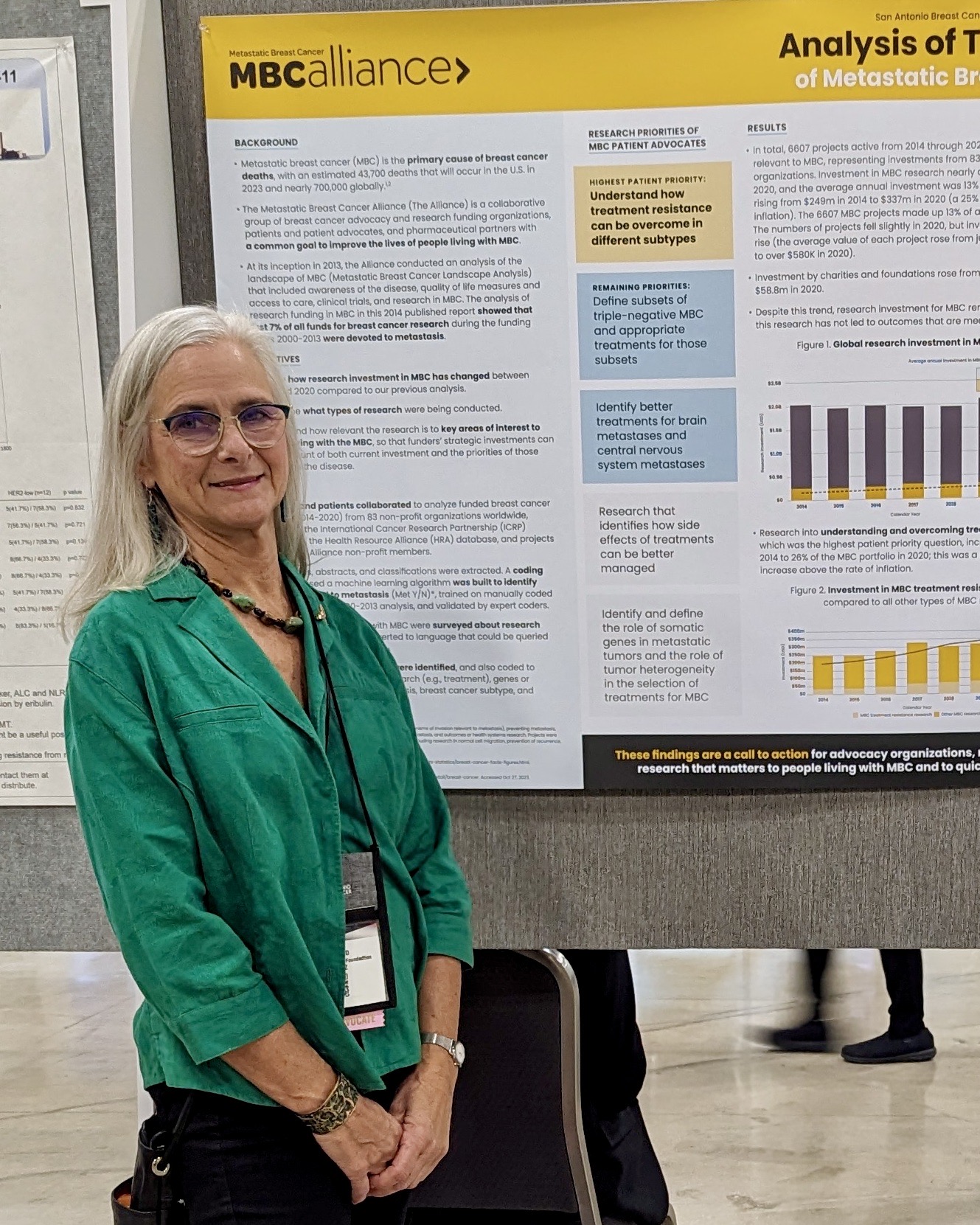
MBC Alliance Vice Chair Margaret Flowers
On December 8, 2023, the Alliance presented their first analysis in a poster at the San Antonio Breast Cancer Symposium entitled “Analysis of Trends in Funding of Metastatic Breast Cancer Research” in which grants funded between 2014-2020 were coded and queried. Below is a summary of the poster presentation and additional analyses.
Overall trends and changes since the 2000-2013 period
Previously (2000-2013), 7% of the $15 billion in breast cancer research dollars was for MBC. In 2014-2020, 13% of all breast cancer research dollars was devoted to MBC. Therefore, investment in MBC as a percentage of breast cancer research nearly doubled for grants funded in 2014-2020 compared to 2000-2013. The annual investment in MBC research increased from $249 million in 2014 to $337 million in 2020, which is a 25% rise above the rate of inflation.
Changes in funding for MBC research over the period of 2014-2020
Investments by charities and foundations increased by approximately 20%—from $49.9 million in 2014 to $58.8 million in 2020. Globally, 83 organizations, including 904 projects from Alliance members, funded the projects between 2014 and 2020. Grants investigating the CSO category of “treatment” showed the largest increase, suggesting that MBC research is becoming more translational and clinical.
Analysis of the top patient priority: Treatment resistance
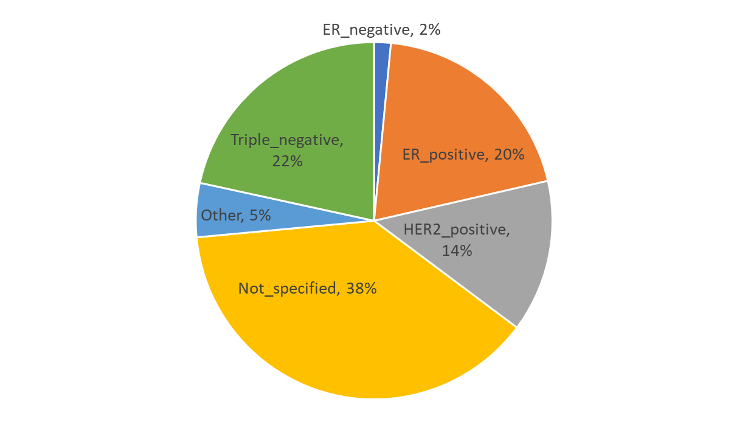
Percent of grants investigating MBC treatment resistance by subtype
People living with MBC identified treatment resistance as their top priority (Table 1, green box). Of the 6607 projects devoted to MBC from 2014 to 2020, 1382 (21%) addressed resistance. The percent of MBC research dedicated to resistance increased from 15% ($36.6 million) in 2014 to 26% ($89.1 million) in 2020, an increase that was above inflation. Treatment research related to resistance was the largest growing area from 2014 to 2020.
Among projects that stated a breast cancer subtype in the abstract or title, treatment resistance was most frequently investigated in triple-negative (22%) and estrogen receptor-positive (20%) MBC (see pie chart), with an increasing trend from 2014 to 2020. Not all projects specified a subtype, and some projects were related to multiple subtypes.
Recent Analysis
The majority of research was funded by US-based funding organizations (Table 2), which contributed just over 91% of investment into MBC. The research in this analysis was heavily skewed towards US organizations for which we have the most data, and lack significant data for non-US organizations.
Table 2: US-based funding by year and sector type


Andrea Hutton, MBCA Patient Advocate
“The increase in funding has led to advances in treatments for TNBC and HER2-positive metastatic breast cancer,” said Andrea Hutton, MBC patient advocate. “Funding is how we show priorities, and if we want the study of metastatic disease to continue to be a priority, we need to continue to advocate for funders to invest in research in prevention and treatment of metastatic disease.”
What’s next
The coding tool developed by the Alliance provides a starting point to analyze future MBC research funding questions, especially those of highest priority to people living with MBC, and provides a way to identify areas of research with gaps in funding. As patient priorities change over time, new queries of funded grants can be performed. The Subcommittee and collaborators have begun to query the next two patient priorities (purple box, Table 1) and expect to report the results in 2024.
Despite moving in an encouraging direction, current MBC research funding remains inadequate to address the urgency felt by people living with MBC. This analysis is a call to action for advocacy organizations, researchers, clinicians, funders, industry, and regulators to work collaboratively to examine the data and determine where gaps in research areas persist. These efforts among stakeholders are required to accelerate research that matters to people living with MBC and to quickly translate discovery research into interventions that save lives.
The Metastatic Breast Cancer Alliance gratefully acknowledges all nonprofit organizations that contributed their funding data. The Alliance also thanks all patient advocates who contributed to identification of patient priority areas.
Research Funding Analysis Subcommittee: Kimberly Badovinac, Lynne Davies, Amy Dworkin, Margaret Flowers, Andrea Hutton, Katherine McKenzie, Teri Pollastro, and Kari Wojtanik.
Project management support was provided by Medha Deoras-Sutliff.
Medical writing support was provided by Kristine De La Torre, PhD.

